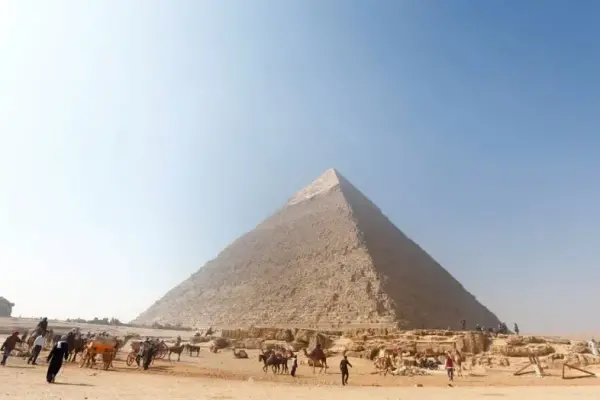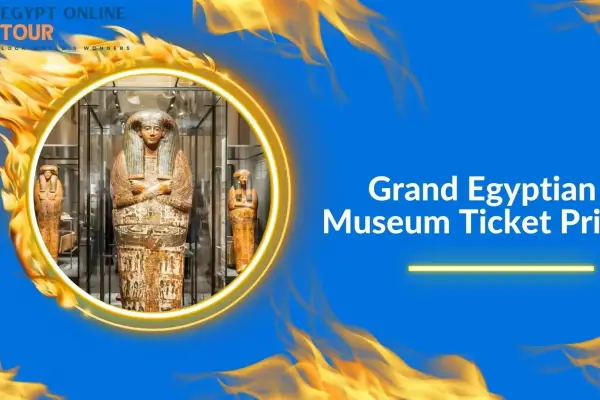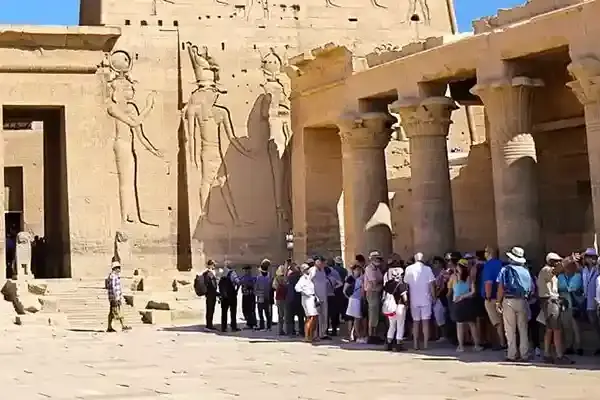13 Reasons to Visit Siwa Oasis - Book Your Tour

- Jun 01, 2025
- Egypt Oasis Guide | Top Desert Oases to Visit in Egypt
- 1,281
Visit Siwa Oasis—only 1.2% of tourists to Egypt make it there, according to Statista. Why so few, when it offers salt lakes, ancient temples, and real silence? Could it be Egypt’s best-kept secret? You’re about to discover 13 reasons people return again and again. Have you seen them all?
Table of contents [Show]
-
Why Visit Siwa Oasis?
- 1. Float in Salt Lakes
- 2. Tour the Shali Fortress
- 3. Go on a Desert Safari
- 4. Discover Ancient Tombs at Gabal al-Mawta
- 5. Bathe in Hot and Cold Springs
- 6. Visit the Temple of the Oracle
- 7. Catch the Sunset at Fatnas Island
- 8. Climb Dakrur Mountain
- 9. Swim in Cleopatra’s Pool
- 10. Learn from Siwi Culture
- 11. Feel the Quiet and Safety
- 12. Heal Your Body Naturally
- 13. Stay in One-of-a-Kind Lodges
- Is it safe to travel to Siwa Oasis?
- Best Time to Visit Siwa Oasis: When to Go for the Best Weather and Experience
- How to Get to Siwa Oasis: The Easiest Ways from Cairo or Alexandria
- Where is Siwa Oasis? Pinpointing Egypt's Desert Jewel!
- Is Siwa Worth Visiting?
-
Getting Around Siwa Oasis
- 1. Walk Through the Town Center
- 2. Rent a Bicycle
- 3. Hire a Tuk-Tuk
- 4. Use Donkey Carts
- 5. Rent a 4x4 with Driver
- 6. Desert Safari Tours
- 7. Use Hotel Transport Services
- 8. Ride a Motorcycle Taxi (If Available)
- 9. Group Shared Vehicles
- 10. Bring a Map or Offline GPS App
- Transport Types Compared
- Final Tips
-
The Best Restaurants in Siwa: Where to Taste Authentic Flavors
- Fatnis Island Café
- Shali Lodge Restaurant
- Siwa House Restaurant
- Olive Branch Restaurant
- Sultana Restaurant
- The Siwa Café
- Nour Siwa Restaurant
- El Bahar Restaurant
- Abdu Restaurant
- Kenooz
- Desert Rose Café
- Adrar Restaurant
- Palm Tree Restaurant
- Taziry Eco-Lodge Restaurant
- La Kahwa
- Siwa Cuisine Home Kitchen (By Locals)
- Final Tips for Dining in Siwa
-
The History of Siwa Oasis: A Timeline of Ancient Roots and Cultural Legacy
-
Key Historical Facts About Siwa Oasis
- Siwa was first settled over 10,000 years ago
- Known as Sekht-am (Field of Trees) by the ancient Egyptians.
- It remained isolated for centuries
- The Oracle of Amun made Siwa famous
- In 331 BC, Alexander the Great traveled to Siwa.
- Siwa’s people have Amazigh (Berber) roots
- Romans later passed through but didn’t stay long
- The 13th century saw the construction of the Shali fortification.
-
Invasions and floods weakened Shali over time
- Islam reached Siwa during the Arab conquest
- Trade caravans once connected Siwa with Libya
- Modern Egypt united Siwa under national rule in the 1800s
- Roads arrived only in the 1980s
- Amazigh (Siwi) is still the Siwa language.
- Traditional dress and weddings follow Berber customs
- Famous ruins include Gebel al-Mawta (Mountain of the Dead)
- The Temple of the Oracle still stands
- Salt lakes have been here for centuries
- World War II passed through Siwa’s deserts
- Tourism rose in the 1990s and beyond
- Key Periods in Siwa's History
- What Makes Siwa’s History Special
- Final Notes for History Lovers
-
Key Historical Facts About Siwa Oasis
-
The Best Things to Do in Siwa Oasis: Explore, Relax, and Connect with the Desert
- 1. Climb the Shali Fortress at Sunset
- 2. Go to the Oracle of Amun Temple.
- 3. Watch the Sunset at Fatnas Island
- 4. Float in Siwa’s Salt Lakes
- 5.4x4 Adventure in the Great Sand Sea
- 6. Take a Sand Bath in Dakrur Mountain
- 7. Tour the Mountain of the Dead (Gebel al-Mawta)
- 8. Buy Handmade Goods at Siwa Market
- 9. Visit the Old Mosques of Siwa
- 10. Rent a Bike and Explore Palm Groves
- 11. Sip Date Juice in a Roadside Café
- 12. Try Traditional Siwan Food
- 13. Attend a Local Festival (If You Can)
- 14. Meditate or Read by Cleopatra’s Spring
- What to Do and When
- Where to stay in Siwa Oasis
- Why Choose Egypt Online Tour to Visit Siwa Oasis?
- The Summary
Why Visit Siwa Oasis?
Siwa Oasis is one of Egypt’s hidden treasures. Far from the tourist crowds, it offers nature, history, and peace in one place. Visit Siwa Oasis for a genuine experience. You'll find salt lakes, ancient ruins, desert safaris, healing springs, and rich culture.
1. Float in Salt Lakes
- Salt lakes in Siwa are deep blue with white salt edges
- They have a 95% salt content, which is more than the Dead Sea.
- You float without effort and feel light due to its high salinity.
- Water is rich in minerals, helpful for skin and breathing
- The best time to visit is midday on sunny days
- Avoid shaving before the visit to prevent skin irritation
2. Tour the Shali Fortress
- located in Siwa's heart, which dates back to the 13th century.
- Built from a unique blend of clay, salt, and rock.
- Once housed hundreds of locals in one structure
- Rain damaged it in 1926, but parts still stand
- Climb for wide views of the oasis and sunset
- You’ll gaze over 300,000 palm trees, a view unchanged for centuries.
- The mosque minaret is a key feature still visible
- Spend 30–60 minutes walking its remains
3. Go on a Desert Safari
- Ride 4x4s across the Great Sand Sea
- Try sandboarding on 140-meter dunes
- Most tours run in the afternoon or at sunrise
- Stop by the hot and cold springs on the way
- Enjoy tea at desert camps under the stars
- Some tours include dinner with a guide
4. Discover Ancient Tombs at Gabal al-Mawta
- Contains hundreds of Ptolemaic and Roman tombs
- Explore the beautifully painted Tomb of Si Amun and the Crocodile Tomb
- Si Amun’s tomb has gods painted on the walls
- Hike to the hilltop for impressive views
- Less grandiose than Giza, it is a more intimate and authentic glimpse into Egypt's past.
5. Bathe in Hot and Cold Springs
- Siwa boasts over 200 natural springs in and around IT.
- Combining soothing comfort with possible healing effects.
- Soak in the soothing warmth of Al Maza Hot Spring.
- Or refresh yourself in a cool, clear spring.
- Some springs lie near farms and quiet areas
- These natural pools are a vital part of Siwa's ecosystem.
- Ideal spot for resting after long desert tours.
6. Visit the Temple of the Oracle
- Located in Aghurmi village, built in the 6th century BC
- When Alexander the Great went there, he was honored.
- Once known across the Mediterranean for wisdom
- Now ruins, but still a place full of stories
- The site has views over palm trees and a lake
7. Catch the Sunset at Fatnas Island
- Also known as Fantasy Island
- Located on Lake Siwa with palm trees and calm water
- Locals go there to reflect and relax
- Perfect spot for meditation and tea
- Best visited before sunset for a full view of the colors
8. Climb Dakrur Mountain
- A short hike gives views of Siwa and the desert dunes
- Popular for sand baths and healing sessions
- Some stay on its slopes to help with joint pain
- Festivals are sometimes held here by locals
- Bring water and good shoes for the climb
9. Swim in Cleopatra’s Pool
- A freshwater spring called Ain Guba
- Legend says Cleopatra swam in it
- Its water is warm in winter and cool in summer.
- Making it a delightful experience year-round.
- Surrounded by palm and olive trees
- Locals bathe in clothes; follow customs
- Fruit juice stands are nearby for a break
10. Learn from Siwi Culture
- Home to the Siwi Berber people
- Locals speak the Amazigh language
- Women wear silver jewelry and traditional dress
- Visit the Traditional Siwa House Museum
- Handmade crafts include pottery, rugs, and baskets
- Support local guides to benefit the community
11. Feel the Quiet and Safety
- Siwa has no noise, no rush, no pressure
- No city stress, no crowds, no scams
- Walk freely at night; crime is rare
- Locals are polite, not pushy to tourists
- Ideal for travelers who want peace and slow travel
12. Heal Your Body Naturally
- Salt water helps joints, muscles, and breathing
- Sand baths reduce back and leg pain
- Sulfur springs relax tired bodies
- Some travelers come just for healing sessions
- Local guides help arrange wellness stays
13. Stay in One-of-a-Kind Lodges
- Choose between eco-lodges, camps, and guesthouses
- Stay in a salt-brick room lit by candles
- Sleep in a desert tent under a full sky
- Pick lakeside spots or village lodges
- Most places serve local food and tea
- Many offer guided trips, meals, or workshops
If you want a memorable trip full of nature, culture, and adventure, visit Siwa Oasis. It offers a rare chance to explore Egypt’s desert beauty and meet a welcoming community. Plan your visit today and discover why Siwa remains a treasured destination. Enjoy your stay, and if you're planning a trip nearby, don't forget to check the check the Grand Egyptian Museum ticket price
Is it safe to travel to Siwa Oasis?
A Real-World Guide to a Peaceful Desert Escape
Considering a vacation to the Western Desert of Egypt and unsure about the safety of Siwa Oasis, you’re not alone.Safety matters to every traveler, and Siwa stands out as one of Egypt’s most peaceful, welcoming, and secure escapes—far from the city's noise.
Is Siwa Oasis Safe for Tourists?
- Crime is rare. Day or night, you can go around freely without worrying.
- Locals are respectful. The Siwan people are renowned for their civility and helpfulness.
- Checkpoints exist for your protection. Police checkpoints on roads are routine and ensure security for all visitors.
- Solo travelers feel safe. Many female travelers report positive, respectful experiences.
It is also included in the 10 Days Round Trip Nile Cruise and Pyramids tour , which includes all of Egypt's major historical sites in one amazing trip.
Read about: What are the important holidays in Egypt
1. Travel Smart
- Bring enough cash; there's only one ATM, and it might not work.
- Book reliable transportation and travel during daylight hours.
- Use reputable guides for desert tours—never explore alone.
2. Dress Respectfully
- Siwa is traditional. Cover shoulders and knees.
- Swimwear should be modest, especially in public springs like Cleopatra’s Pool.
3. Be Desert-Ready
- Pack sunscreen, hats, and water.
- In the middle of the day, try not to spend too much time in the sun.
- Always bring extra water when exploring.
4. Respect Local Rules
- Public alcohol consumption is not accepted.
- Always ask before taking photos of people.
5. Health Awareness
- Clinics are available, but basic. Carry your essentials.
- Consider travel insurance to cover medical emergencies.
- Before you visit the salt lakes, avoid shaving because the excessive salinity could harm your skin.
- Avoid getting saltwater in your eyes.
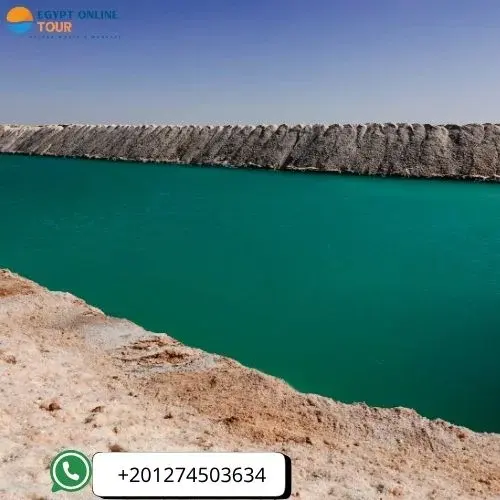
Getting Around Safely in Siwa
Transport Option | Pros | Safety Tip |
Walking | Free, relaxing | Stick to lit areas at night |
Bicycle | Easy, affordable | Stay on marked paths |
Tuk-tuks | Quick in-town | Set the price before riding |
Donkey Carts | Traditional | Slow, but safe |
Taxis | Best for long rides | Use trusted drivers |
Desert Trips in Siwa: Stay Prepared
Heading to the Great Sand Sea? Always go with a licensed guide. They’ll handle the terrain and bring essential supplies. Popular tours include sandboarding, spring stops, and stargazing under the desert sky.
Cultural Awareness in Siwa
- Siwans speak Amazigh (Siwi) and Arabic.
- Their customs are unique. Respect goes a long way.
- Learn a few local words. Locals appreciate the effort.
- Support local crafts—buy handmade baskets, silver, and textiles.
Is the Journey to Siwa Safe?
Yes, but it’s long.
- Bus: 10–12 hours, private vehicle: 8–9 hours from Cairo.
- Roads are safe during the day. Avoid night travel.
- Expect military checkpoints—standard for all travelers.
Safety Checklist Before You Go
- Carry enough cash
- Dress modestly
- Use guides for desert trips
- Avoid alcohol in public
- Pack warm clothes (winter) and water (summer)
- Confirm all bookings ahead of time
- Store valuables in hotel safes
- Bring sunblock, mosquito repellent, and a first aid kit
- Inform your hotel if going on long excursions
Anyone interested in the origins of Egyptian culture should definitely visit. This 8-day Pyramids & Nile by Air tour can incorporate it for a seamless and comprehensive experience.
Is Siwa Oasis Safe?
Yes, Siwa Oasis is very safe. It’s remote, peaceful, and community-driven. Crime is nearly nonexistent. Locals welcome tourists with care and warmth. With a little preparation and cultural awareness, your trip to Siwa will not only be safe—it will be unforgettable.
Plan now, travel smart, and discover one of Egypt’s most serene places.
Siwa isn’t just safe. It's the escape you were unaware you required.
Best Time to Visit Siwa Oasis: When to Go for the Best Weather and Experience
the best months to visit Egypt and Siwa Oasis are from October to April. These months bring warm days, cool nights, and perfect weather for exploring. Spring and autumn are especially ideal. You can enjoy desert safaris, float in salt lakes, and walk through ancient ruins without the intense heat.
Avoid summer temperatures that often reach over 40°C, with dust storms and harsh sun. Instead, plan your trip in March, April, October, or November. These months also feature local festivals like the Siyaha Festival, giving you a deeper cultural experience.
To enjoy Siwa at its best:
- Travel during cooler months
- Book local tours early
- Pack light clothes for the day and warm layers for the night
- Stay hydrated and wear sun protection
With fewer tourists, peaceful views, and natural beauty, this period offers the most rewarding experience in Egypt’s hidden gem.
Read about: How to Plan a Trip to Cairo Egypt

How to Get to Siwa Oasis: The Easiest Ways from Cairo or Alexandria
Reaching Siwa Oasis takes time, but it's worth it. Most visitors start from Cairo or Alexandria. First, catch a bus at Cairo’s Turgoman or Giza station. The trip lasts 10–12 hours. Alternatively, a private taxi cuts travel time to 8–9 hours. From Alexandria, buses and taxis take 8 hours. Some prefer renting a 4x4 for comfort and desert views. Plan ahead, bring snacks, rest at Matrouh, and arrive ready to visit Siwa Oasis. Explore the city that began it all by booking a tour with Egypt Online Tour.
Where is Siwa Oasis? Pinpointing Egypt's Desert Jewel!
Siwa Oasis lies deep in Egypt’s Western Desert. It’s about 560 kilometers west of Cairo and near the Libya border, and 300 km from Marsa Matrouh. It is situated between the Great Sand Sea and the Qattara Depression. The actual oasis is roughly ten kilometers long. Indeed, it offers a peaceful escape.. Also, it has around 200 natural springs that keep it green and fertile. To visit Siwa Oasis means stepping into a unique place rich in history and culture, far from the busy cities. Make reservations for Egypt Online Tour's top "In the Heart of Civilization" Egypt Vacation Packages if you wish to witness this for yourself!
Is Siwa Worth Visiting?
Yes, Siwa is truly worth visiting. In the vast Western Desert of Egypt, Siwa Oasis is a real hidden gem. Far from bustling cities, it offers a blend of ancient history and stunning nature. Also, its unique culture and friendly people make every visit special. Moreover, fresh dates and natural springs add to the charm. Because it’s remote, you’ll find fewer tourists and clear skies. So, you enjoy space, silence, and true moments. If you want peace, beauty, and a genuine getaway, visit Siwa Oasis for unforgettable memories. The city's heritage endures, and it is currently listed as one of the best cities to visit in Egypt 2025 .
Read about: How to Enjoy A Luxury Vacation in Egypt
Top Sights of Siwa Oasis
Siwa Oasis is one of Egypt’s most peaceful and scenic places. Though remote, it’s full of charm. You’ll find ancient ruins, warm springs, dunes, and quiet villages. Below are the best places to explore when you visit Siwa Oasis.
Shali Fortress
- Once the town center. Built from salt and mud.
- Climb to the top for views across palm trees and rooftops.
- Moreover, sunset here creates a beautiful orange glow.
Temple of the Oracle
- Alexander the Great visited this ancient site.
- Its silence tells stories of ancient Egypt.
- Its elevation offers a serene and expansive outlook as well
Cleopatra’s Spring
- A round natural pool. Easy to access.
- Locals and visitors love to swim here.
- In addition, cafés nearby serve fresh juices.
Salt Lakes
- Float without effort in deep blue saltwater.
- The water heals your skin.
- Furthermore, the scenery looks magical during sunset.
Fatnas Island
- A small island encircled by water and palm trees.
- Visit during sunset for beautiful reflections.
- Also, it’s quiet—ideal for a break.
Mountain of the Dead (Gebel al-Mawta)
- Rock-cut tombs from the Ptolemaic period.
- Some still hold ancient paintings.
- Moreover, the view from the top is worth the climb.
Bir Wahed Hot Spring
- Located behind the dunes in the desert.
- First, ride across the sand in a 4x4.
- Then, relax in the hot water before nightfall.
Dakrur Mountain
- Known for its healing sand baths.
- Locals believe the warm sand eases joint pain.
- In addition, the view stretches over the desert.
Siwa House Museum
- A simple place showing Siwan culture.
- Displays traditional clothes, tools, and crafts.
- Also, it explains how locals lived for centuries.
Taghaghien Island
- Secluded springs surrounded by palm groves.
- Few tourists visit this spot.
- Therefore, it’s perfect for a quiet picnic or swim.
Bonus Experiences in Siwa
Desert Safari in the Great Sand Sea
- Ride a jeep over dunes and visit desert springs.
- Sandboard on tall slopes.
- Finally, take in the clear heavens while stargazing to cap off the day.
Siwan Market (Souk al-Adel)
- Shop for dates, silver jewelry, and woven baskets.
- Talk with locals and try Siwan olives.
- Moreover, it supports small families and craftspeople.
Siwan Cuisine
- Enjoy fresh dates, local bread, and olive-rich stews.
- Most meals are organic and handmade.
- Also, each dish reflects the oasis’s heritage.
Amun Temple at Umm Ubayd
- What remains of a once-great temple.
- Close to the Oracle site.
- Though small now, it holds deep history.
Dakroun Spring
- A natural sulfur spring used for healing.
- Locals believe it helps with joint pain.
- It’s not crowded, so you can relax.

Siwa Oasis: Sights at a Glance
Sight Name | Key Features | Why Visit |
Shali Fortress | Old mud-brick ruins, wide views of Siwa | Great for history lovers and sunset photos |
Temple of the Oracle | Linked to Alexander the Great, an ancient spiritual site | Peaceful spot with deep history |
Mountain of the Dead | Ancient tombs with colored walls | Rare mix of history and desert views |
Cleopatra's Pool | Natural spring, linked to Queen Cleopatra | Swim in legend, unwind in nature |
Salt Lakes | Clear water floats easily, rich in salt | Feels like magic, helps skin and mood |
Fatnas Island | Small island with palm trees and lake views | Quiet sunsets, ideal for relaxing |
Final Tips Before You Go
- Plan your trip during spring or autumn.
- Wear comfortable shoes for walking on sand.
- Respect local traditions—modest dress is appreciated.
- Take a bus or a private vehicle through Marsa Matrouh.
- Most sights are free or have low entry fees.
Explore it yourself with Egypt Online Tour—start with this guide on how to plan a family vacation in Egypt from USA .
Spring | Best Time | Healing Perk | Siwan Secret |
Cleopatra’s | 7-9 AM | Skin softening | Free figs fall nearby! |
Bir Wahed | 5-7 PM | Muscle relaxation | Rocks scorch – wear shoes! |
Taghaghien | Weekdays | Stress relief | Pack lunch – no shops!
|
Siwa is more than just a stop. It’s a place of calm, culture, and connection. Whether you want ancient stories or quiet moments, Siwa gives you both. Plan early, explore slowly, and enjoy every corner.
Getting Around Siwa Oasis
Siwa is small but spread out. While the town center is walkable, many attractions are far. You’ll need local transport to explore. Below are the best ways to move around after you visit siwa oasis.
1. Walk Through the Town Center
- Most guesthouses, shops, and cafés sit close together.
- Therefore, walking is easy and pleasant.
- Also, it helps you connect with locals and enjoy the quiet pace.
- Streets are calm, with little traffic.
2. Rent a Bicycle
- Bicycles are easy to find and cheap to rent.
- A lot of resorts hire them out on a daily or hourly basis.
- Moreover, bikes are great for short trips to springs and ruins.
- Ride early morning or late afternoon to avoid heat.
- Always carry water with you.
3. Hire a Tuk-Tuk
- Tuk-tuks are fast and easy for short distances.
- Prices are low but always agree before the ride.
- In addition, many drivers offer local tips during your ride.
- Tuk-tuks are common around the central areas.
4. Use Donkey Carts
- Some locals still use donkey carts daily.
- It's slow but authentic.
- You may find them near the market or main square.
- Also, it’s fun for short town rides.
5. Rent a 4x4 with Driver
- Needed for desert sites and dunes.
- Drivers know the area and sand paths well.
- Besides, it’s safer than trying to drive yourself.
- Ask your hotel to recommend trusted drivers.
- Expect extra for sunset or stargazing trips.
6. Desert Safari Tours
- Tour operators run safaris by 4x4 to remote springs and the Great Sand Sea.
- These often include stops at Bir Wahed and Taghaghien Island.
- Additionally, many include sunset meals or overnight camps.
- Always confirm what’s included before booking.
7. Use Hotel Transport Services
- Some lodges and eco-hotels offer private rides.
- This is useful if you're staying far from town.
- Moreover, it helps you avoid haggling.
- Ask in advance if they offer pickup and drop-off.
8. Ride a Motorcycle Taxi (If Available)
- Not common, but found in some parts.
- Ideal for quick single-person trips.
- However, always wear a helmet if offered.
- Additionally, before beginning your ride, confirm the cost.
9. Group Shared Vehicles
- In peak times, some travelers arrange shared rides.
- It lowers the cost for faraway spots.
- Additionally, you get to meet fellow visitors.
- Check message boards in cafés or hostels.
10. Bring a Map or Offline GPS App
- Signal can drop in desert areas.
- Therefore, download offline maps before arriving.
- Apps like Maps.me work well in Siwa.
- Moreover, drivers use them too for quick routes.
Learn more: Is Cairo safe for American tourists
Transport Types Compared
Transport Type | Best For | Tips | Estimated Cost |
Walking | Central town | Wear comfy shoes | Free |
Bicycle | Springs, temples | Ride early or late | EGP 50–100/day |
Tuk-tuk | Short rides | Agree on the fare before the ride | EGP 20–50/ride |
Donkey cart | Town experience | Fun and slow | EGP 30–50/ride |
4x4 with driver | Desert, far sites | Ask the hotel for a trusted guide | EGP 500–800/trip |
Desert tour | Full-day exploration | Confirm all stops and meals | EGP 800–1500/tour |
Hotel shuttle | Long or late rides | Pre-book through reception | Varies by hotel |
Final Tips
- Start early to avoid midday heat.
- Bring water, cash, and a hat on every ride.
- Always agree on prices in advance.
- Respect local customs and dress modestly.
- Lastly, don’t rush—Siwa is best enjoyed slowly.
The Best Restaurants in Siwa: Where to Taste Authentic Flavors
Siwa Oasis is more than just breathtaking scenery and historical sites. Its food scene offers fresh, local flavors that tell stories of the desert life. When you visit Siwa Oasis, trying the best restaurants is a must. Here’s a guide to the top places where you can enjoy delicious meals, friendly service, and a true taste of Siwa.
Fatnis Island Café
- Lakeside café with fresh juices
- Best for sunset relaxation
- Try the date smoothie
Shali Lodge Restaurant
- Close to Shali Fortress
- Serves local tagines
- Outdoor desert-view seating
Siwa House Restaurant
- Famous for bread and olive oil
- Also offers fresh salads and stews
- Friendly team shares food stories
Olive Branch Restaurant
- Cozy spot with grilled meats
- Simple design, rich taste
- Best known for lamb dishes
Sultana Restaurant
- Family place with mixed dishes
- Tasty desserts with honey and dates
- Good for groups
The Siwa Café
- Great coffee and light snacks
- Uses organic ingredients
- Relaxing and quiet
Nour Siwa Restaurant
- Specializes in fish and veggies
- Recipes passed down for generations
- Garden view seating
El Bahar Restaurant
- Local and Mediterranean flavors
- Seafood tagine is a top pick
- Calm spot for dinner
Abdu Restaurant
- Located near the main square.
- It’s the most popular place in town.
- Serves traditional Siwan dishes with chicken, lamb, and rice.
- Moreover, their fresh juice is always a good choice.
- Also, the outdoor setting is quiet and relaxing.
Kenooz
- A small family-run spot near the market.
- Try the Siwan-style lentil soup and bread.
- Moreover, they offer vegetarian options too.
- The place is clean and friendly.
Desert Rose Café
- Simple place, known for tasty grilled meats.
- Prices are fair, and portions are large.
- Moreover, they serve meals fast and hot.
- It’s best for lunch after a morning tour.
Adrar Restaurant
- A hidden gem near the mountain area.
- Specializes in roasted chicken and rice dishes.
- Also, they prepare food in wood-fired ovens.
- Go in the evening for fresh, warm bread.
Palm Tree Restaurant
- Attached to one of the guesthouses.
- Local chefs cook daily fresh meals.
- Moreover, they serve many vegan-friendly items.
- The garden setting makes it extra peaceful.
Taziry Eco-Lodge Restaurant
- Slightly upscale, with a focus on organic meals.
- All items are made with traditional methods.
- Besides, the view over the lake is stunning.
- Ideal for a quiet, slow dinner.
La Kahwa
- Modern café with Arabic coffee, herbal teas, and desserts.
- Also, they serve light sandwiches and salads.
- Moreover, the quiet music makes it cozy.
- Great for an evening chat or break.
Siwa Cuisine Home Kitchen (By Locals)
- Some families cook for guests at home.
- You can try real Siwan meals like “fatta” or date-stuffed bread.
- Also, this supports local income directly.
- Ask your hotel for trusted home cooks.
Final Tips for Dining in Siwa
- Always carry small cash — most places don’t take cards
- Try local juice like date or hibiscus
- Ask for today’s special — ingredients are seasonal
- Food is made fresh, so allow time
- Support local families by eating at home kitchens when possible
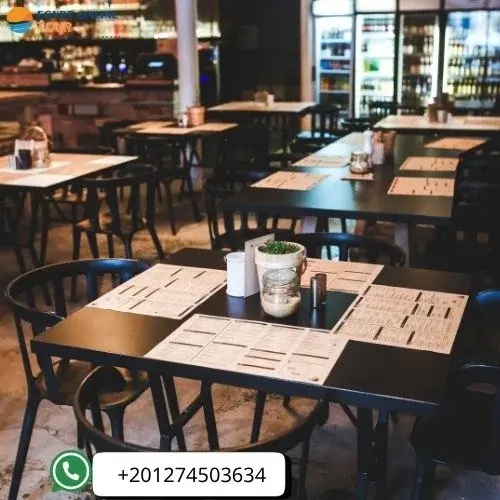
The History of Siwa Oasis: A Timeline of Ancient Roots and Cultural Legacy
Siwa Oasis is not only rich in nature but also full of stories that stretch across thousands of years. From ancient gods to desert battles, this oasis has always held a special place in Egypt’s history. When you visit Siwa Oasis, you’re walking through the layers of many forgotten worlds.
Key Historical Facts About Siwa Oasis
Siwa was first settled over 10,000 years ago
- People lived here in the Stone Age.
- Tools and cave art prove early life in the area.
Known as Sekht-am (Field of Trees) by the ancient Egyptians.
- Palm groves and olive trees always shaped its name.
- Even today, green fields cover much of Siwa.
It remained isolated for centuries
- Dunes and distance from the Nile kept Siwa hidden.
- This helped preserve its Berber identity.
The Oracle of Amun made Siwa famous
- The Temple of Amun drew visitors from all over.
- Pilgrims believed the god spoke through priests.
In 331 BC, Alexander the Great traveled to Siwa.
- He came to ask the Oracle if he was a true son of a god.
- The answer changed world history.
Siwa’s people have Amazigh (Berber) roots
- Their language, customs, and clothes differ from the rest of Egypt.
- This culture survives today.
Romans later passed through but didn’t stay long
- Ruins show Roman touches, but Siwa stayed mostly free
- It never became a major Roman outpost.
The 13th century saw the construction of the Shali fortification.
- Locals built it with salt and mud to protect against attacks.
- It stood for centuries.
Invasions and floods weakened Shali over time
- The rain in 1926 caused major damage.
- However, many still live around the ruins.
Islam reached Siwa during the Arab conquest
Mosques and Islamic customs spread, but local identity remained strong.
Trade caravans once connected Siwa with Libya
- Donkeys carried salt, dates, and olives across the desert.
- This helped Siwa grow.
Modern Egypt united Siwa under national rule in the 1800s
- Under Muhammad Ali, Egypt’s control expanded.
- Yet Siwa stayed culturally independent.
Roads arrived only in the 1980s
- Before that, travel was only by camel or 4x4.
- Roads brought change, but also tourism.
Amazigh (Siwi) is still the Siwa language.
- It is not Arabic.
- Only a few places in Egypt keep a separate mother tongue.
Traditional dress and weddings follow Berber customs
- Events can last for days.
- Music, dancing, and henna play a big part.
Famous ruins include Gebel al-Mawta (Mountain of the Dead)
- This hill has dozens of ancient tombs with painted walls.
- Most date back to Roman and Ptolemaic times.
The Temple of the Oracle still stands
- Though partly ruined, you can climb and see views over the palm trees.
Salt lakes have been here for centuries
- Locals mined salt for trade.
- Now, people float in these blue lakes for fun and healing.
World War II passed through Siwa’s deserts
- British and Axis soldiers fought nearby.
- Desert battles left traces in the sand.
Tourism rose in the 1990s and beyond
- People now visit for nature, history, and culture.
- But Siwa keeps its calm rhythm.
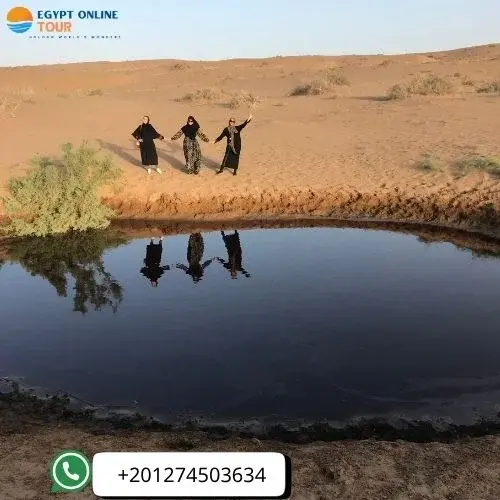
Key Periods in Siwa's History
Period | Key Event or Feature | Cultural Impact |
Over 10,000 years ago | Early settlements and cave tools | Earliest human presence in the area |
Around 600 BC (26th Dynasty) | Oracle of Amun becomes active | Siwa becomes an important religious site |
331 BC | Alexander the Great visits the Oracle | Siwa gains worldwide recognition |
Roman Era (30 BC–300 AD) | Burial tombs were built, and limited Roman control was established | Roman art influences local culture |
1200s AD | Shali Fortress was built using kershef | Protection from raids and attacks |
1800s | Muhammad Ali incorporates Siwa into Egypt | Siwa joins modern Egypt |
1980s | First paved road reaches Siwa | Start of tourism and better access |
Present Day | Siwa maintains its unique culture and language | Mix of tradition and modern life |
What Makes Siwa’s History Special
- It has one of the few preserved Amazigh communities in Egypt
- The Oracle of Amun shaped world events
- Isolation protected Siwa’s identity for thousands of years
- Traditions still guide daily life today
- Visitors can touch ancient history and still hear the native Siwi spoken
Final Notes for History Lovers
- Always ask local guides for stories—they know the legends
- Visit the Oracle temple early for better light and fewer crowds
- Respect local customs, especially around ruins and holy places
- Read signs carefully—many are in both Arabic and Siwi
- Buy local books for deeper stories not told online
The Best Things to Do in Siwa Oasis: Explore, Relax, and Connect with the Desert
Offering a mix of natural beauty, history, and unique culture. Whether you're here for a weekend or a week, each day brings something new. When you visit Siwa Oasis, you’ll find slow moments, real food, and desert wonders waiting at every turn. For those interested in more ancient sites, you can also learn about where Memphis is in Egypt and add even more depth to your journey.
1. Climb the Shali Fortress at Sunset
- Built in the 13th century from salt and mud
- Offers wide views of the oasis and surrounding dunes
- Visit near sunset for the best photos and cool breeze
- Ruins are accessible and safe to explore.
2. Go to the Oracle of Amun Temple.
- Renowned for hosting Alexander the Great during his legendary visit in 331 BC.
- A spiritual center that shaped Egyptian and Greek history
- Though partially ruined, it's open for visits
- Guides on-site share the temple’s legends
3. Watch the Sunset at Fatnas Island
- Palm-covered spot near Lake Siwa
- Offers one of the calmest sunset views in Egypt
- Bring tea or juice and stay until the stars appear
- Accessible by bike, tuk-tuk, or short walk
4. Float in Siwa’s Salt Lakes
- Clear, blue water with high salt content
- You float without effort, like in the Dead Sea
- Many visitors find it healing for their skin and joints
- Bring water shoes to protect your feet
5.4x4 Adventure in the Great Sand Sea
- Rolling dunes stretch beyond the horizon
- Most trips include sandboarding and hot springs
- Guides know safe routes and hidden spots
- Best done early morning or late afternoon
6. Take a Sand Bath in Dakrur Mountain
- They spend ten to fifteen minutes covering you with hot sand.
- Said to relieve pain and cleanse the body
- Available in summer, guided by trained locals
- Rest and hydrate well after the session
7. Tour the Mountain of the Dead (Gebel al-Mawta)
- Hill filled with ancient tombs and painted walls
- Dates to the Ptolemaic and Roman periods
- Walk slowly and read signs for details
- Early morning visit avoids heat and crowds
8. Buy Handmade Goods at Siwa Market
- Find dates, olive oil, embroidered clothes, and more
- Prices are fair, but bargaining is welcome
- Morning is quieter, evenings are busier
- Always ask if items are locally made
9. Visit the Old Mosques of Siwa
- Al-Takruri and Al-Masry mosques are open to tourists
- Simple structures but full of history and quiet beauty
- At the door, take off your shoes and dress modestly.
- Locals welcome respectful visitors
10. Rent a Bike and Explore Palm Groves
- Bikes are easy to rent and cheap
- Ride through palm farms and hidden springs
- Use offline maps for directions
- Go early to avoid midday heat
11. Sip Date Juice in a Roadside Café
- Local cafés serve fresh dates, hibiscus, and tamarind drinks
- Sit underthe shade and watch daily life pass by
- Request tea with dessert herbs or fresh mint.
- Small coins are handy for payment
12. Try Traditional Siwan Food
- Local dishes include date-stuffed bread and vegetable tagine
- Eat at home kitchens or small restaurants
- Most meals are made fresh from farm ingredients
- Always carry small cash for local spots
13. Attend a Local Festival (If You Can)
- Big celebrations happen around Islamic holidays
- Music, dance, and traditional dress are common
- Ask your hotel if events are happening during your visit
- Visitors are usually welcome, but should stay respectful
14. Meditate or Read by Cleopatra’s Spring
- The ancient spring is said to have been used by Cleopatra herself
- Now, a small, clear pool for swimming or resting
- Bring a towel and sit nearby under the palms
- Many visitors find it calming and quiet
Read about: Is Egypt a popular place to visit
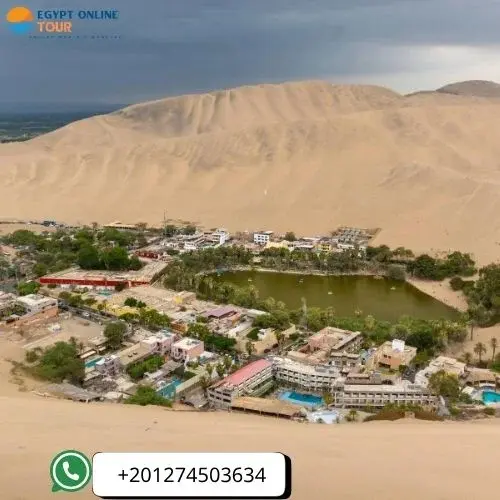
What to Do and When
Activity | Best Time to Visit | What to Bring | Local Tip |
Shali Fortress | Sunset | Camera, hat | Watch your step on old paths |
Temple of the Oracle | Morning | Water, sunblock | Ask guides about local myths |
Fatnas Island | Evening | Drink, light sweater | Great for couples or solo time |
Salt Lakes | Anytime (avoid wind) | Towel, water shoes | Float for 10–20 minutes max |
Great Sand Sea Safari | Early morning or dusk | Hat, sunglasses, water | Book through local guides |
Sand Bath at Dakrur | Midday (summer only) | Towel, loose clothes | Drink water before and after |
Mountain of the Dead | Morning | Closed shoes, phone/camera | Avoid touching tomb paintings |
Siwa Market | Morning or evening | Small cash, reusable bag | Support sellers with fair tips |
Old Mosques | Midday or prayer times | Modest clothes, socks | Ask before taking photos |
Bike Ride | Early morning | Water, offline map | Stay on marked paths |
Local Cafés | Afternoon | Small coins | Ask for fresh juice |
Home Kitchens / Food Spots | Lunch or dinner | Cash, open mind | Meals take time—don’t rush |
Local Festival | Ask in advance | Camera, respectful clothes | Don’t interrupt prayer moments |
Cleopatra’s Spring | Morning or late day | Towel, book or journal | Don’t jump or splash |
Where to stay in Siwa Oasis
Siwa Oasis, nestled in Egypt's Western Desert, offers a range of accommodations that blend seamlessly with its serene environment. Whether you're seeking luxury, eco-friendly lodgings, or budget-friendly options, Siwa has something to suit every traveler's preference. Here's a curated list of top places to stay when you visit Siwa Oasis:
Top Accommodations in Siwa Oasis
1. Adrère Amellal – Desert Ecolodge
- An off-grid retreat built from natural materials.
- No electricity; rooms lit by candlelight.
- Offers organic meals and serene desert views.
- Ideal for those seeking a digital detox.
2. Taziry Ecolodge & Sustainable Village
- Constructed using traditional Siwan architecture.
- Features an outdoor pool and panoramic desert vistas.
- Emphasizes sustainability and local culture.
- Suitable for eco-conscious travelers.
3. Siwa Shali Resort
- Combines modern amenities with Siwan design.
- Offers spacious rooms and a swimming pool.
- For convenience, it is close to the town center..
- Great for families and groups.
4. Taghaghien Island Resort
- Situated on an island in Siwa Lake.
- Provides basic bungalows with stunning lake views.
- Ideal for travelers seeking tranquility.
- Note: Limited amenities; no air conditioning.
5. Ghaliet Ecolodge & Spa
- Offers a blend of comfort and sustainability.
- Features a spa and wellness center.
- Rooms are designed with natural materials.
- Perfect for relaxation and rejuvenation.
6. Albabenshal Lodge
- Located within the historic Shali Fortress.
- Rooms offer views of the ancient ruins.
- Provides an authentic Siwan experience.
- Ideal for history enthusiasts.
7. Dream Lodge Siwa
- A cozy lodge with traditional decor.
- Offers personalized service and home-cooked meals.
- Situated close to local attractions.
- Suitable for couples and solo travelers.
8. Mountain Camp Ali Khaled
- Set amidst the desert landscape.
- Provides camping-style accommodations with basic facilities.
- Offers guided desert tours and activities.
- Great for adventure seekers.
9. Siwa Paradise Hotel
- Features comfortable rooms with modern amenities.
- Includes a restaurant serving local cuisine.
- Located near the town center.
- Ideal for travelers seeking convenience.
10. Nour El Waha Hotel
- A budget-friendly option with essential facilities.
- Offers a garden and a terrace for relaxation.
- Provides easy access to nearby attractions.
- Suitable for backpackers and budget travelers.
Comparison Table of Top Places to Stay in Siwa Oasis
Accommodation | Category | Features | Best For |
Adrère Amellal | Eco-Luxury Lodge | Candle-lit rooms, off-grid, desert views | Travelers who need full disconnection |
Taziry Ecolodge | Sustainable Stay | Built with natural materials, scenic views | Nature lovers and green travelers |
Siwa Shali Resort | Family Resort | Pool, large rooms, near town | Families or group travelers |
Taghaghien Island Resort | Lakefront Escape | Simple bungalows, lake views, remote location | Visitors seeking peace and quiet |
Ghaliet Ecolodge & Spa | Wellness Lodge | Spa treatments, eco design, local herbs | Guests looking to relax |
Albabenshal Lodge | Heritage Guesthouse | Inside old fortress, traditional rooms | Culture and history fans |
Dream Lodge Siwa | Cosy Lodge | Friendly setting, close to main attractions | Couples and solo travelers |
Mountain Camp Ali Khaled | Adventure Camp | Basic tents, desert location, guided trips | Budget travelers seeking adventure |
Siwa Paradise Hotel | Town Hotel | Central location, simple rooms, good services | Tourists wanting convenience |
Nour El Waha Hotel | Budget Hotel | Garden, terrace, low-cost option | Backpackers on a budget |
When planning your stay, consider the type of experience you're seeking—be it luxury, adventure, or cultural immersion. Each accommodation offers a unique perspective of Siwa's charm. Booking ahead is recommended, particularly during busy seasons, to ensure you get your chosen stay. If you love ancient wonders, you might also enjoy these facts about ancient pyramids in Egypt to inspire your next adventure.
Why Choose Egypt Online Tour to Visit Siwa Oasis?
Egypt Online Tour makes planning easy and clear. You get real help, not just promises.
- Local guides know every corner of Siwa
- Fast support before and during your trip
- Clear prices—no hidden costs
- Flexible plans that fit your time
- Trusted by travelers with real reviews
- Simple booking steps you can finish in minutes
Visit Siwa Oasis with experts who care about your journey from start to end.
We are waiting for you to book your Egypt Tour Packages now.
The Summary
So, you’ve seen why Siwa steals hearts: salt lakes, starry deserts, and whispers of history. Picture your foot on those warm beaches now. Visit Siwa Oasis—but don’t just dream it. Then, let Egypt Online Tour craft your escape. We’ll handle the details; you collect moments. Ready? Book today. Pack light, leave footprints, take stories. (Because these adventures this real shouldn’t wait.)
Frequently Asked Questions
1 Why should I visit Siwa Oasis? ▶
2 How do I get to Siwa Oasis? ▶
3 Can I experience local culture at Siwa Oasis? ▶
4 Is Siwa Oasis family-friendly? ▶
5 How long should I stay at Siwa Oasis? ▶
6 Can I book my trip to visit Siwa Oasis online? ▶
7 What should I pack to visit Siwa Oasis? ▶
Popular Categories
Popular Posts

Top Alexandria Beaches You Must Visit 2026

What are the important holidays in Egypt?
